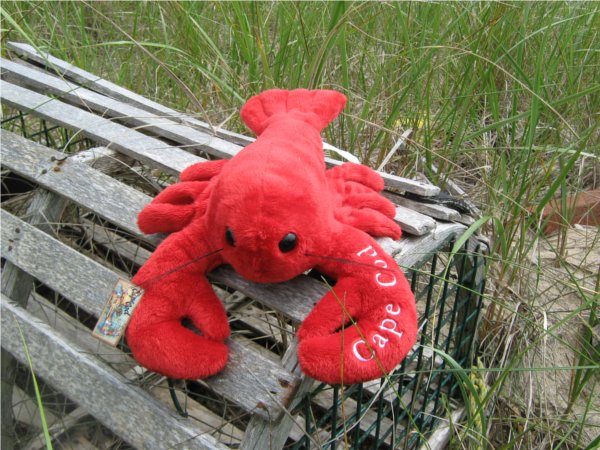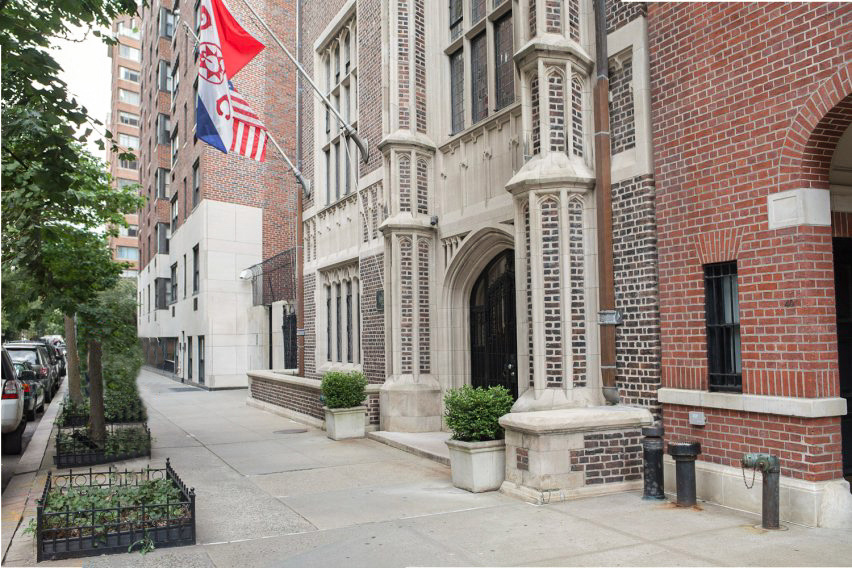 The title of this post might confuse you, unless you remember how I have a deep-seated phobia of people eating invertebrates, especially lobsters and crabs. Whenever king crab legs are on sale at the grocery store, my family goes without meat for the week because I can’t be within 5 meters of the seafood counter. My nightmare? I find myself in a room full of people who are eating lobster and I can’t leave. It makes me absolutely shudder to think of it. So if that’s my nightmare, what could possibly be worse than eating lobster? Eating giant ground sloth! It has a vertebral column, true, but it’s A SLOTH! Why would anyone ever want to eat a sloth? What’s next on the barbaric menu from h-e-double hockey stick, pink fairy armadillos and silky anteaters???
The title of this post might confuse you, unless you remember how I have a deep-seated phobia of people eating invertebrates, especially lobsters and crabs. Whenever king crab legs are on sale at the grocery store, my family goes without meat for the week because I can’t be within 5 meters of the seafood counter. My nightmare? I find myself in a room full of people who are eating lobster and I can’t leave. It makes me absolutely shudder to think of it. So if that’s my nightmare, what could possibly be worse than eating lobster? Eating giant ground sloth! It has a vertebral column, true, but it’s A SLOTH! Why would anyone ever want to eat a sloth? What’s next on the barbaric menu from h-e-double hockey stick, pink fairy armadillos and silky anteaters???
Now, I know what you’re thinking—giant ground sloths are extinct! I am getting all worked up over nothing, and (based on my ridiculous and ranting introduction) probably in desperate need of a spa day to decompress. Eating a giant ground sloth should be as preposterous as eating Kermit the frog. Horrible to think about, yes, but nothing to worry about (assuming you have a good grasp of reality). And yet, a few weeks ago, I came across a paper with the title “Was Frozen Mammoth of Giant Ground Sloth Served for Dinner at The Explorers Club?"
The answer has to be no, right? Both mammoths and giant ground sloths went into steep population declines starting 12,000 years ago, and were completely extinct 4,000–5,000 years ago. The Explorers Club, on the other hand, was founded in 1904 to “to unite explorers in the bonds of good fellowship and to promote the work of exploration by every means in its power.” Last I knew, the Star Trek replicator thing that generates food on command (remember? “Earl Grey. Hot.”) still hasn’t been invented, so how could an extinct mammal have been served for dinner to a group of explorers 60 years ago?
 Well, legend has it that a well-preserved mammoth was found by a club member and put on the “exotics” menu at the January 13, 1951, Annual Explorers Club Dinner in New York City. (Side note, another exotic menu item that night was Pacific spider crabs. Remind me never to join.) As initially preposterous as it seems, eating mammoth meat might have been feasible. Because of where they lived (some in the northernmost reaches of North America and Asia), mammoths can become what are described as “unaltered remains.” This happens when the animal dies and is then quickly covered over in sediments that subsequently freeze, and remain frozen. Many unaltered mammoth remains have emerged from Siberia’s permafrost, but none so spectacular as the baby mammoth discovered in 2007 that was so well preserved it had eyelashes. Only its body hair and toenails were missing.
Well, legend has it that a well-preserved mammoth was found by a club member and put on the “exotics” menu at the January 13, 1951, Annual Explorers Club Dinner in New York City. (Side note, another exotic menu item that night was Pacific spider crabs. Remind me never to join.) As initially preposterous as it seems, eating mammoth meat might have been feasible. Because of where they lived (some in the northernmost reaches of North America and Asia), mammoths can become what are described as “unaltered remains.” This happens when the animal dies and is then quickly covered over in sediments that subsequently freeze, and remain frozen. Many unaltered mammoth remains have emerged from Siberia’s permafrost, but none so spectacular as the baby mammoth discovered in 2007 that was so well preserved it had eyelashes. Only its body hair and toenails were missing.
Is it so far-fetched, then, to think that Explorers Club members had mammoth for dinner, albeit probably with a food poisoning chaser? Perhaps not, but there were some red flags in the story. The mammoth in question was, according to the legend, pulled not from permafrost, but from glacial ice in “Wooly Cove” on Akutan Island in the Aleutians. Preservation of wooly mammoth in glacial ice doesn’t make sense. Second, some accounts of that night’s menu had the diners eating giant ground sloth (specifically Megatherium), not mammoth, and Megatherium were not known to have ever lived in North America, let alone Alaska. So if it was giant ground sloth, that’d be scientifically interesting—but how could we ever know?
Well, it turns out that a sample of the meat was sent to club member Paul Griswold Howes, who was unable to attend the dinner. Howes wanted to display the prehistoric meal at his museum, the Bruce Museum in Greenwich, Connecticut. The Chairman of the annual dinner committee, Commander Wendell Phillips Dodge, obliged and sent Howes a sample immersed in isopropyl alcohol complete with a specimen tag reading “Megatherium.” In 2001, the Bruce Museum’s collections—including the mystery meat—were integrated with those of the Yale Peabody Museum, where in 2014, a couple of Yale graduate students, Jessica Glass and Matt Davis, decided to try and use modern techniques to determine the meat’s identity.
I’d like to interrupt myself here for a minute to say that this has to be among the coolest research projects ever. While Glass used ancient DNA extraction methods to analyze DNA from the meat—a tricky thing to do since the meat had been cooked! —Davis dove into The Explorers Club’s archives looking for clues. As it happens, both Glass and Davis are Explorers Club members, and got not only archive access, but also funding for this endeavor.
With help from colleagues, Glass was able to compile a mitochondrial DNA profile and compare it to known markers of both mammoth and various extinct ground sloth species. No match. What did it match? Green sea turtle. This jibes with a discovery Davis made: A statement from Dodge joking he had discovered “a potion by means of which he could change, say, Cheylone mydas Cheuba [sic] from the Indian Ocean into Giant Sloth from the ‘Pit of Hades’ in the Aleutians.” What is Cheylone mydas Cheuba? No idea. But Chelonia mydas is the scientific name for the green sea turtle. To top it all off, turtle soup had been on the menu at the 1951 dinner, and much to my horror, green sea turtles were often the key ingredient of turtle soup back then. All the pieces clicked into place.
The way Glass and Davis figure, the whole thing was meant as a joke. With a wink and a smile, Dodge served up bits of turtle from the turtle soup saying it was ground sloth/mammoth. The only problem was, the attendees missed the wink and smile. As Davis put it, “It’s like a Halloween party where you put your hand in spaghetti, but they tell you it’s brains. In this case, everyone actually believed it.”
As to why the legend had the club members eating mammoth when everything else pointed to sloth, that is likely the fault of Lieutenant Colonel Herbert Bishop Nichols, who was the first scientific editor of the Christian Science Monitor and happened to also be a club member who attended the 1951 dinner. In his detailed account of the evening, he said that he ate mammoth—not sloth. Perhaps he figured that mammoth was more impressive sounding, maybe he didn’t know the difference, or maybe he not only know the difference, but that Megatherium didn’t live in the Arctic so he changed it to a more appropriate megafauna. I don’t think that question can be answered anytime soon without a time machine.
I must say, I find all aspects of this story that don’t involve actually eating anything completely delightful. I love the gumption of the grad students, I love that this bizarre specimen has been carefully kept and preserved for more than 50 years (go museums!), I love the old-timiness of the whole thing, and I love that it was all a joke that fell flat. If I could be guaranteed projects like these, it’d be almost enough to make me want to go back to school for another degree.
Almost.
Are you a teacher and want to tell us about an amazing free resource? Do you have an idea for a Misconception Monday or other type of post? Have a fossil to share? See some good or bad examples of science communication lately? Drop me an email or shoot me a tweet @keeps3.

